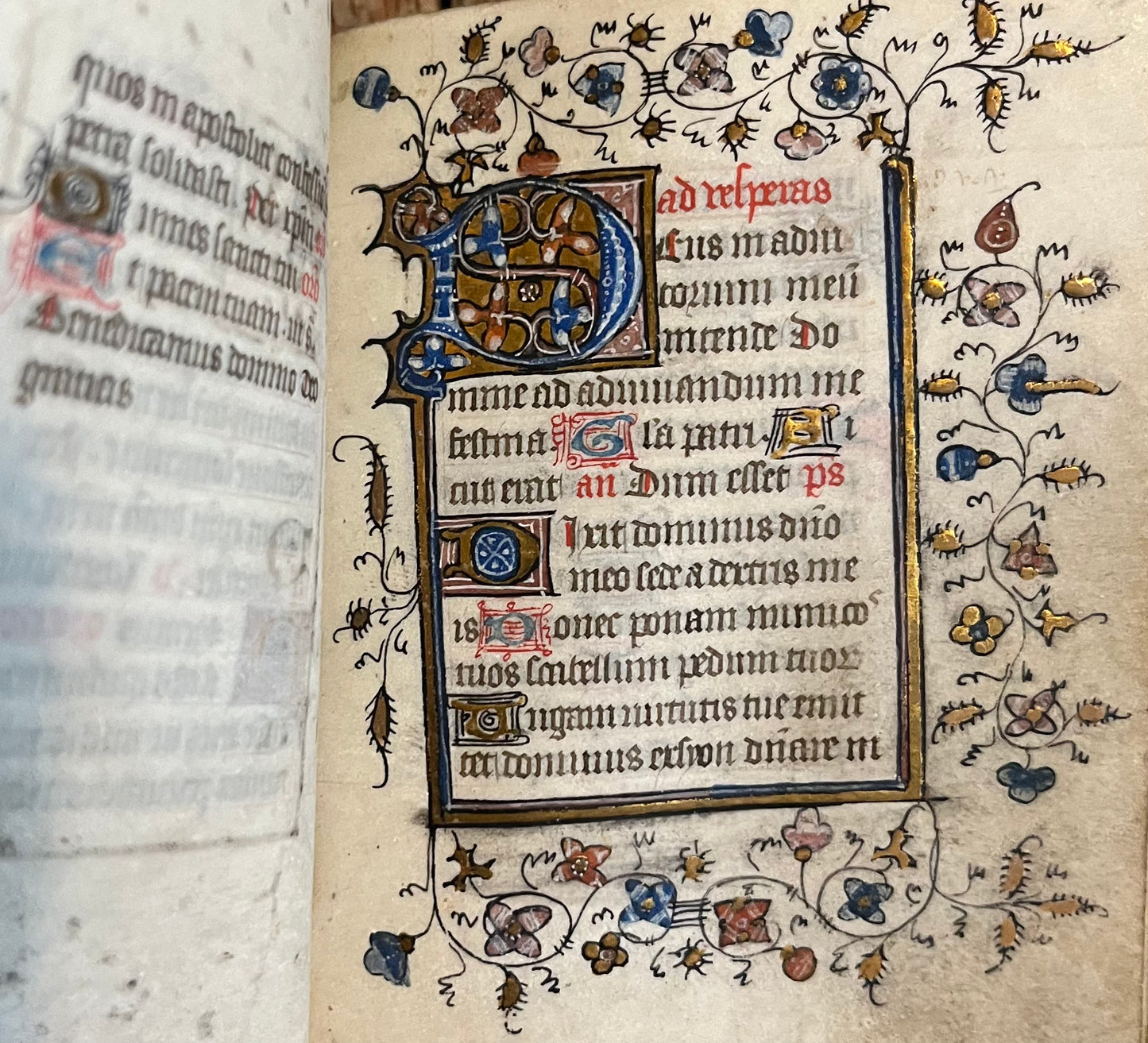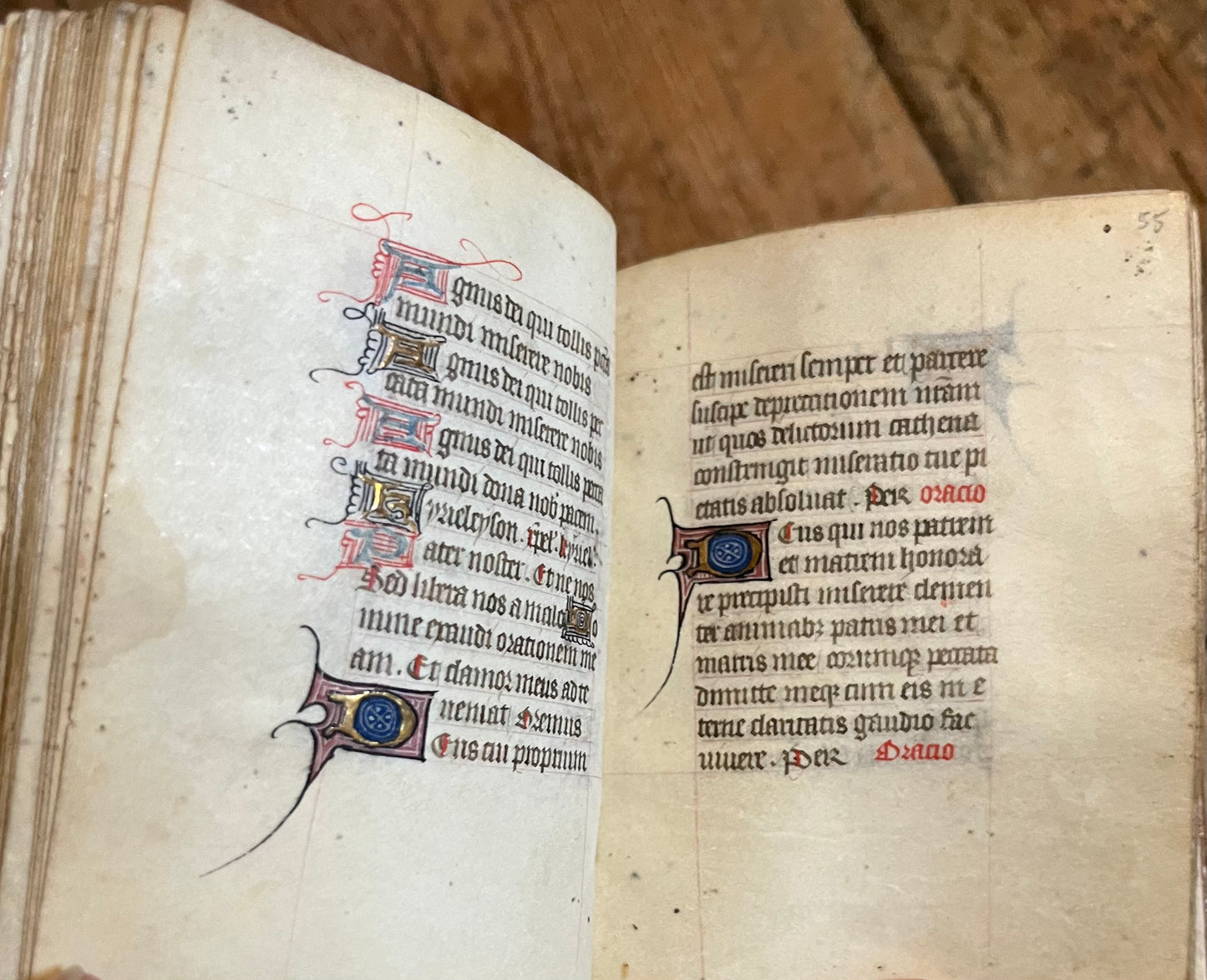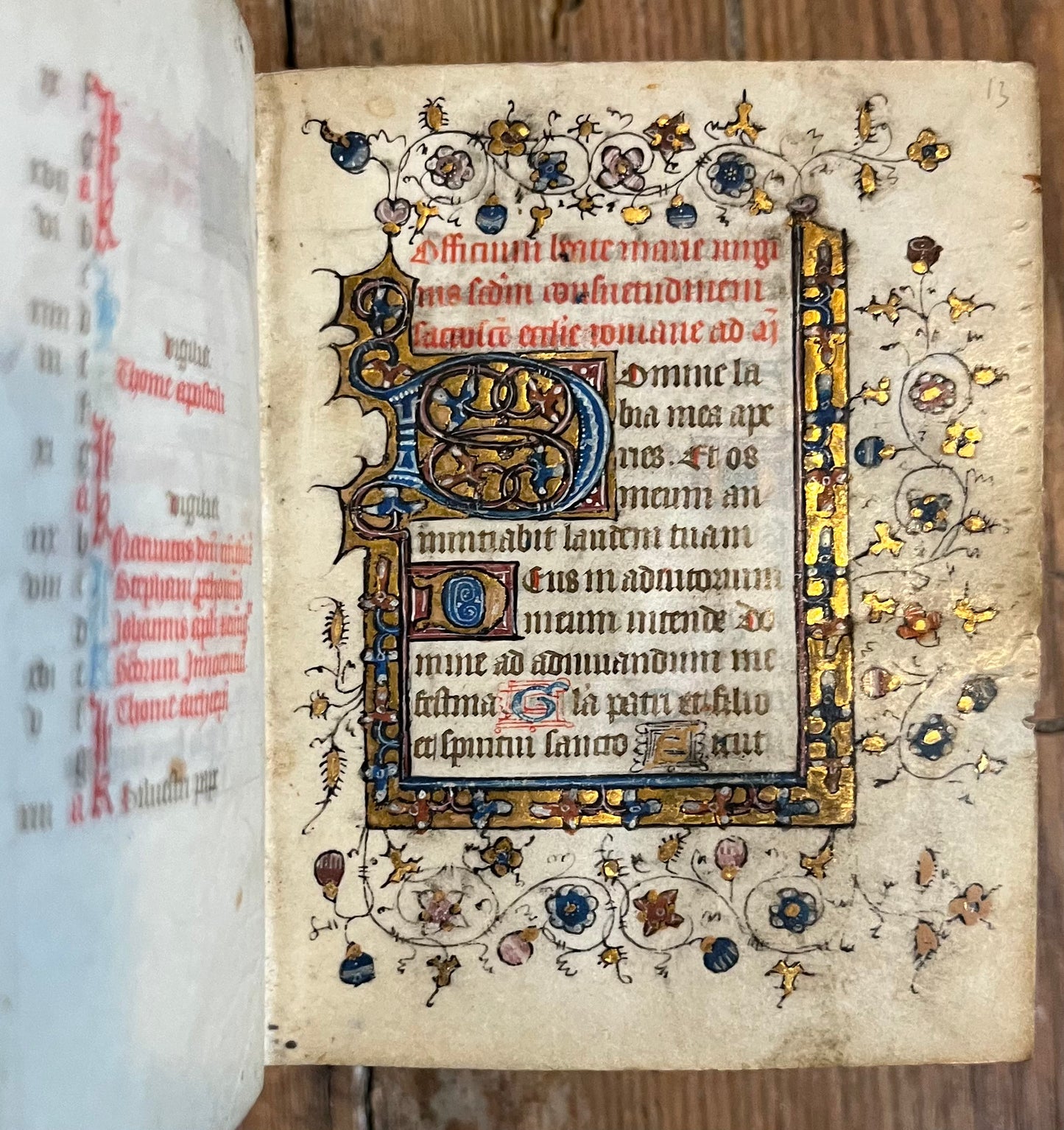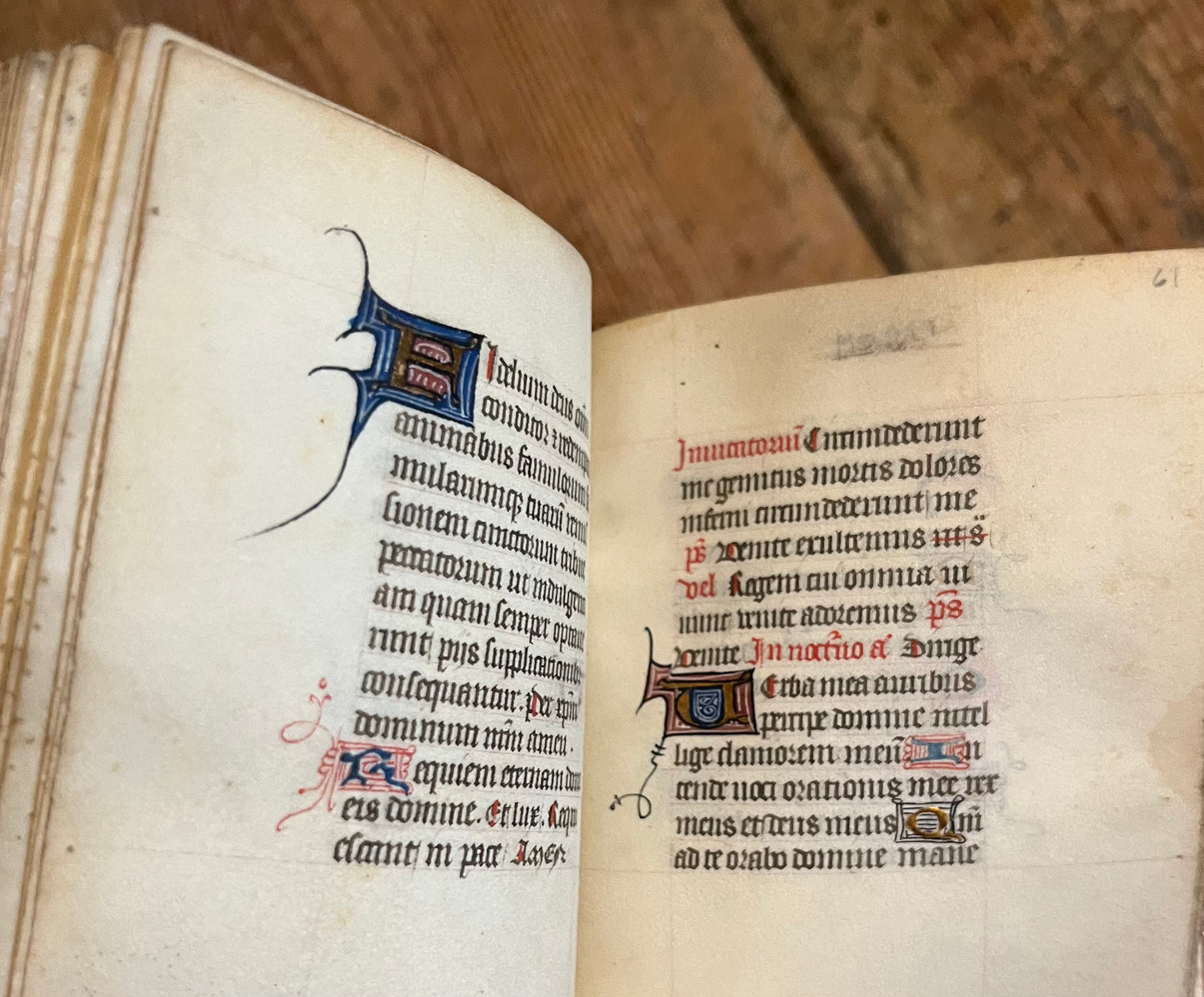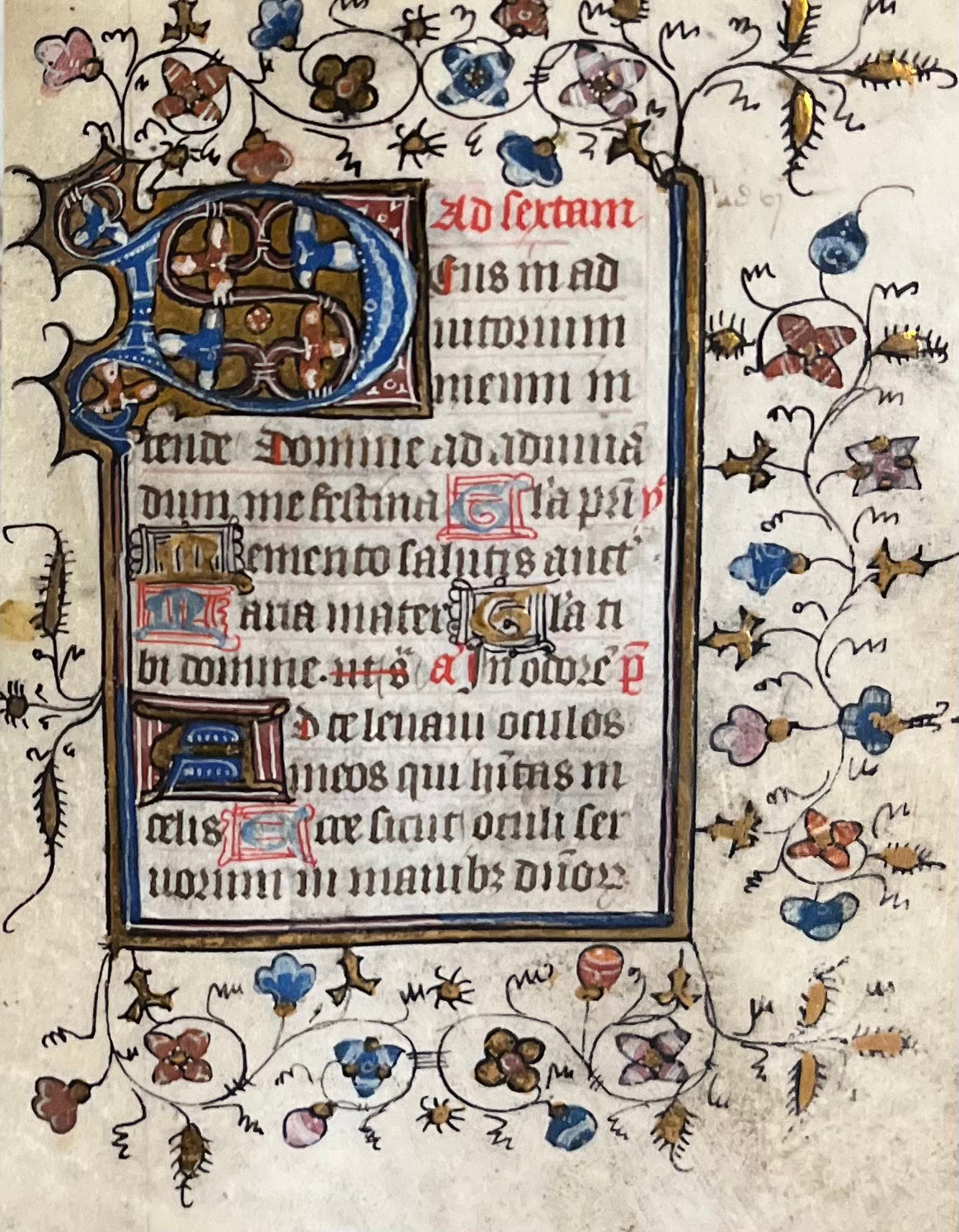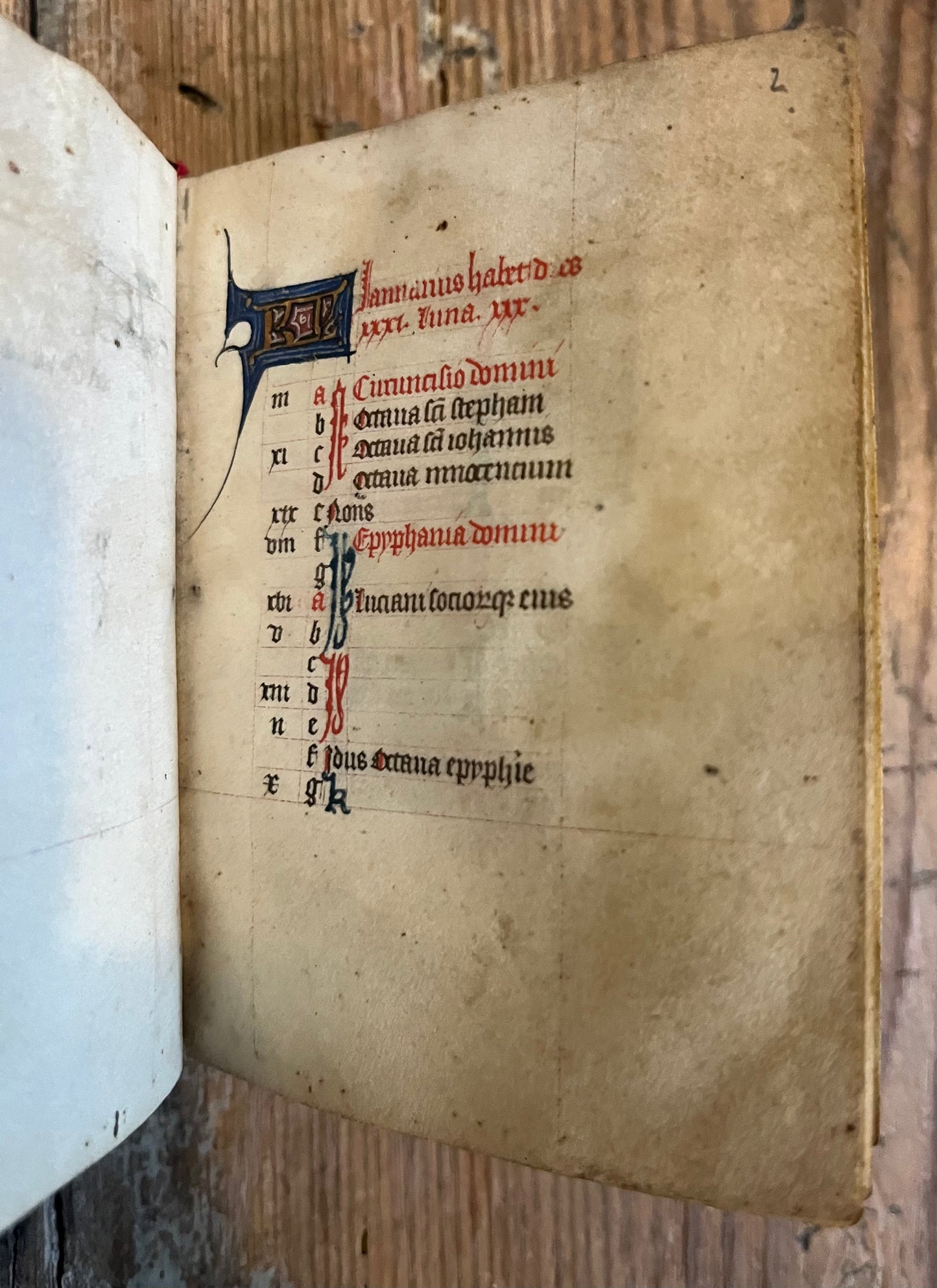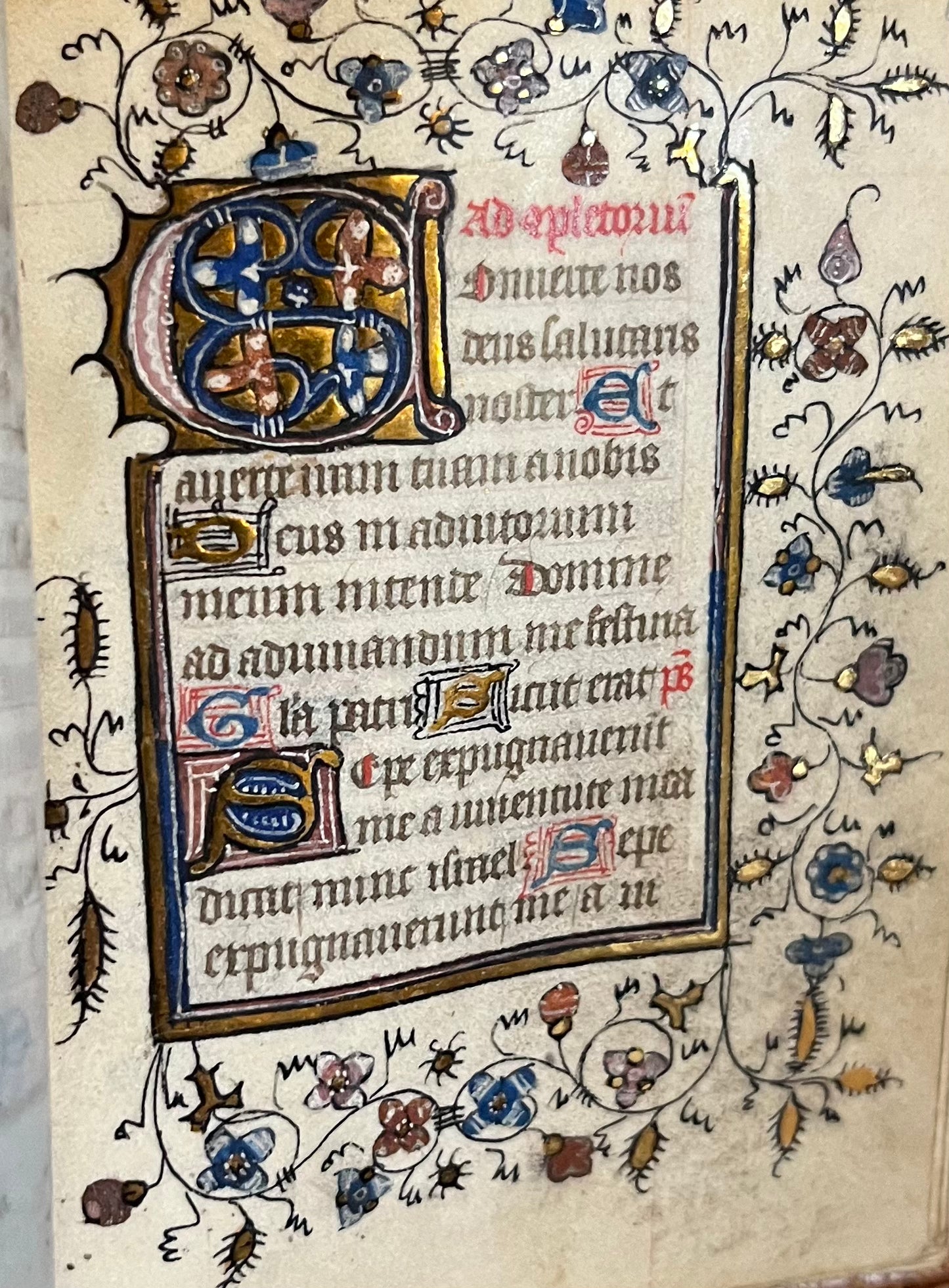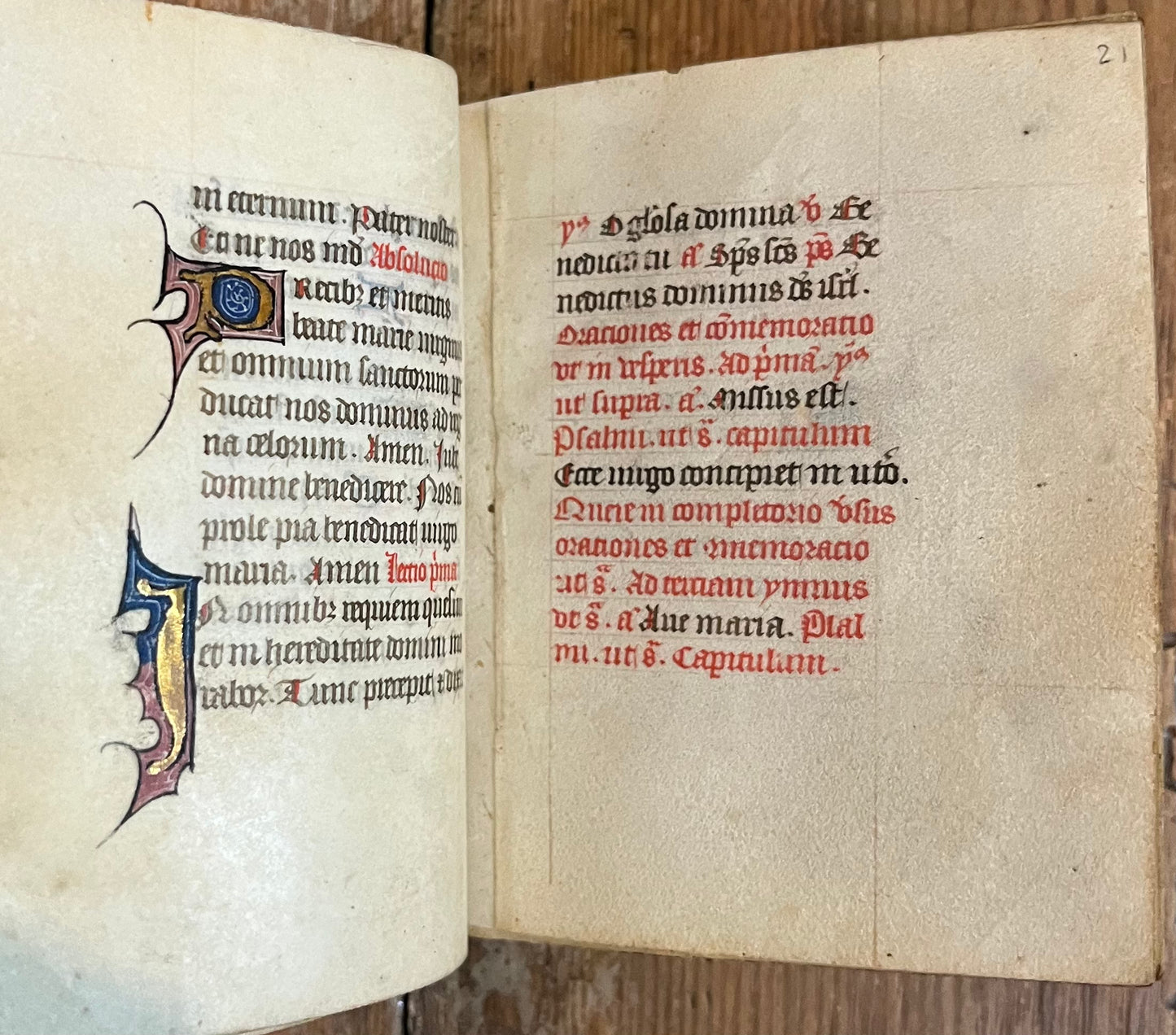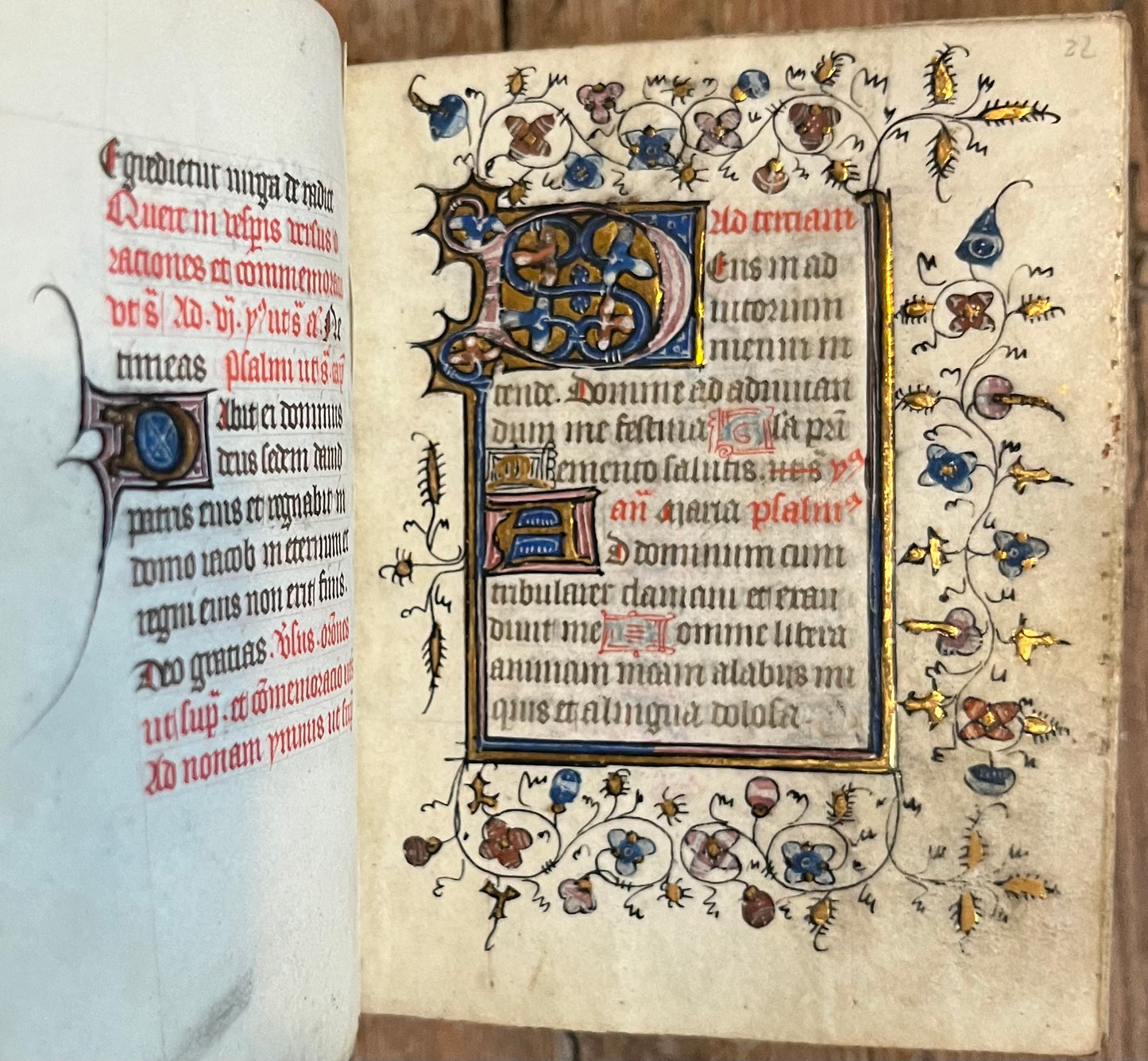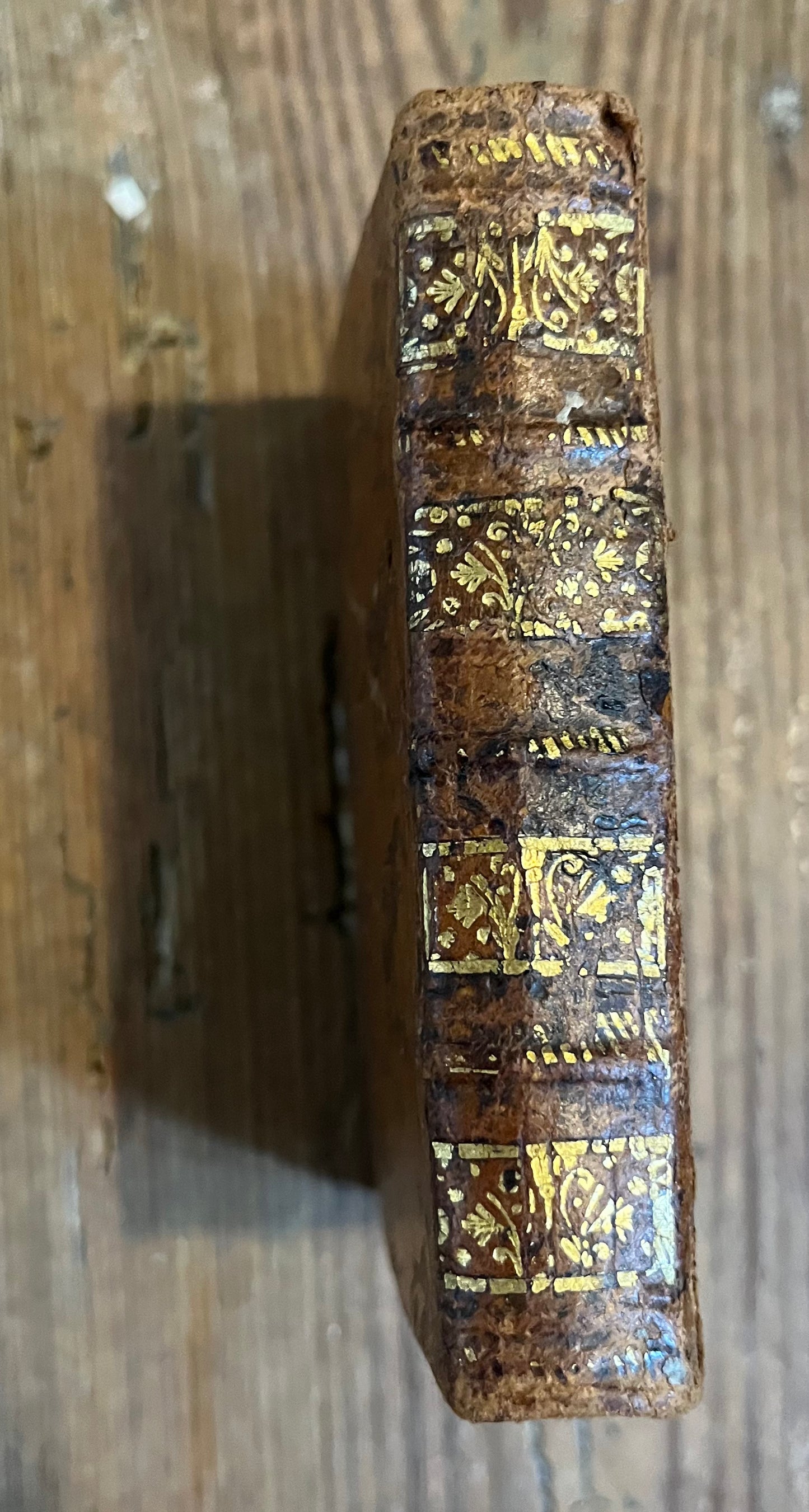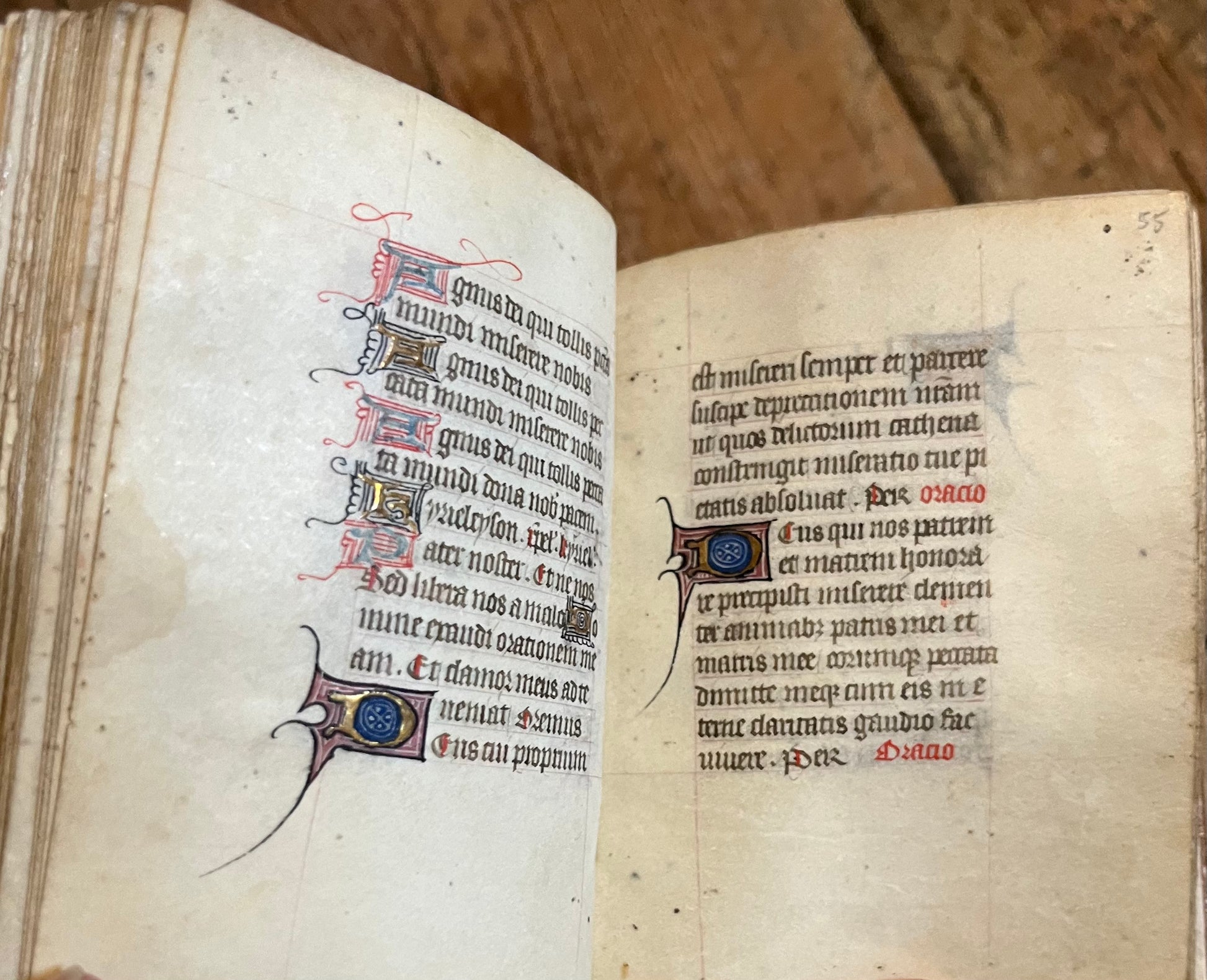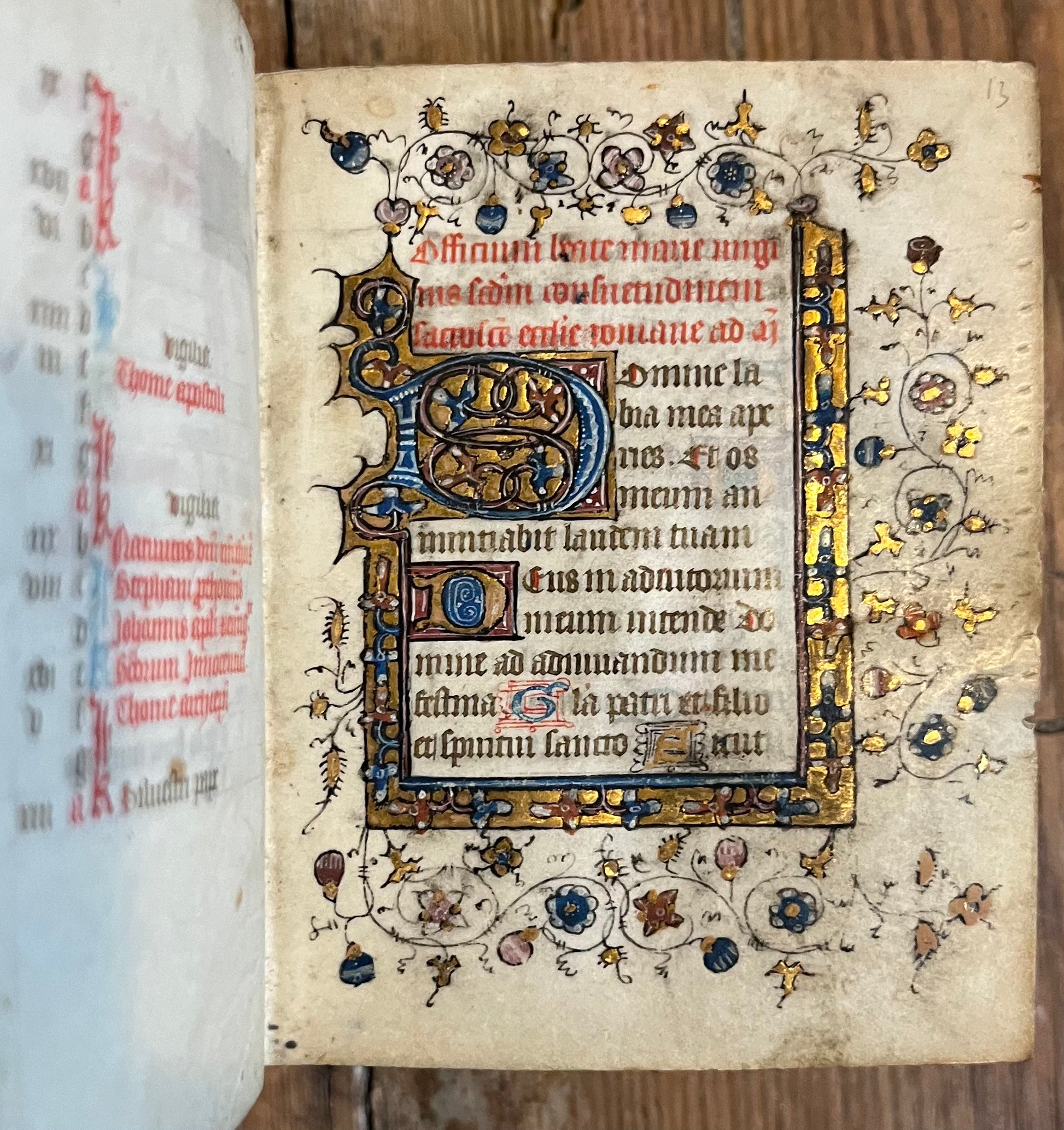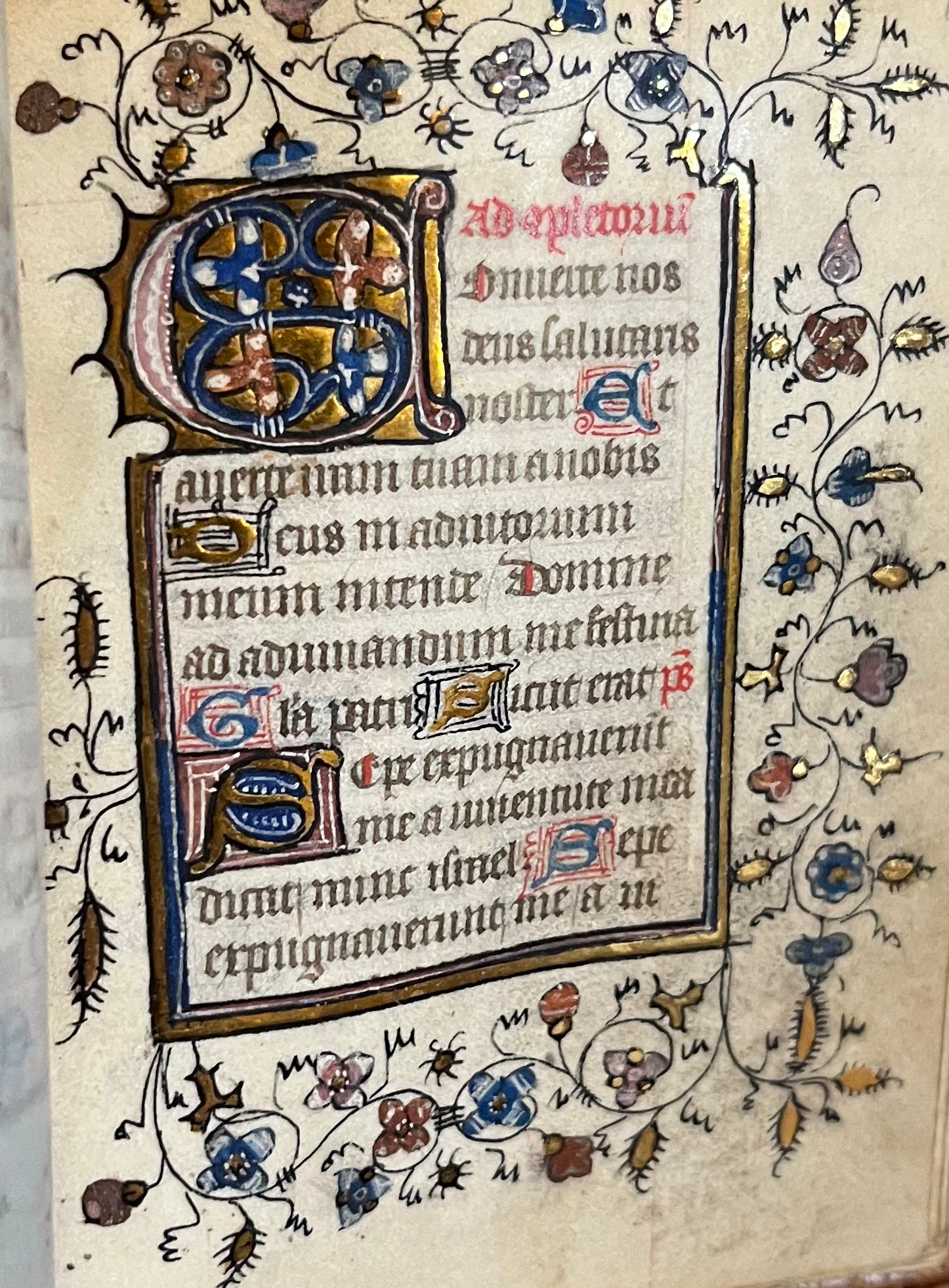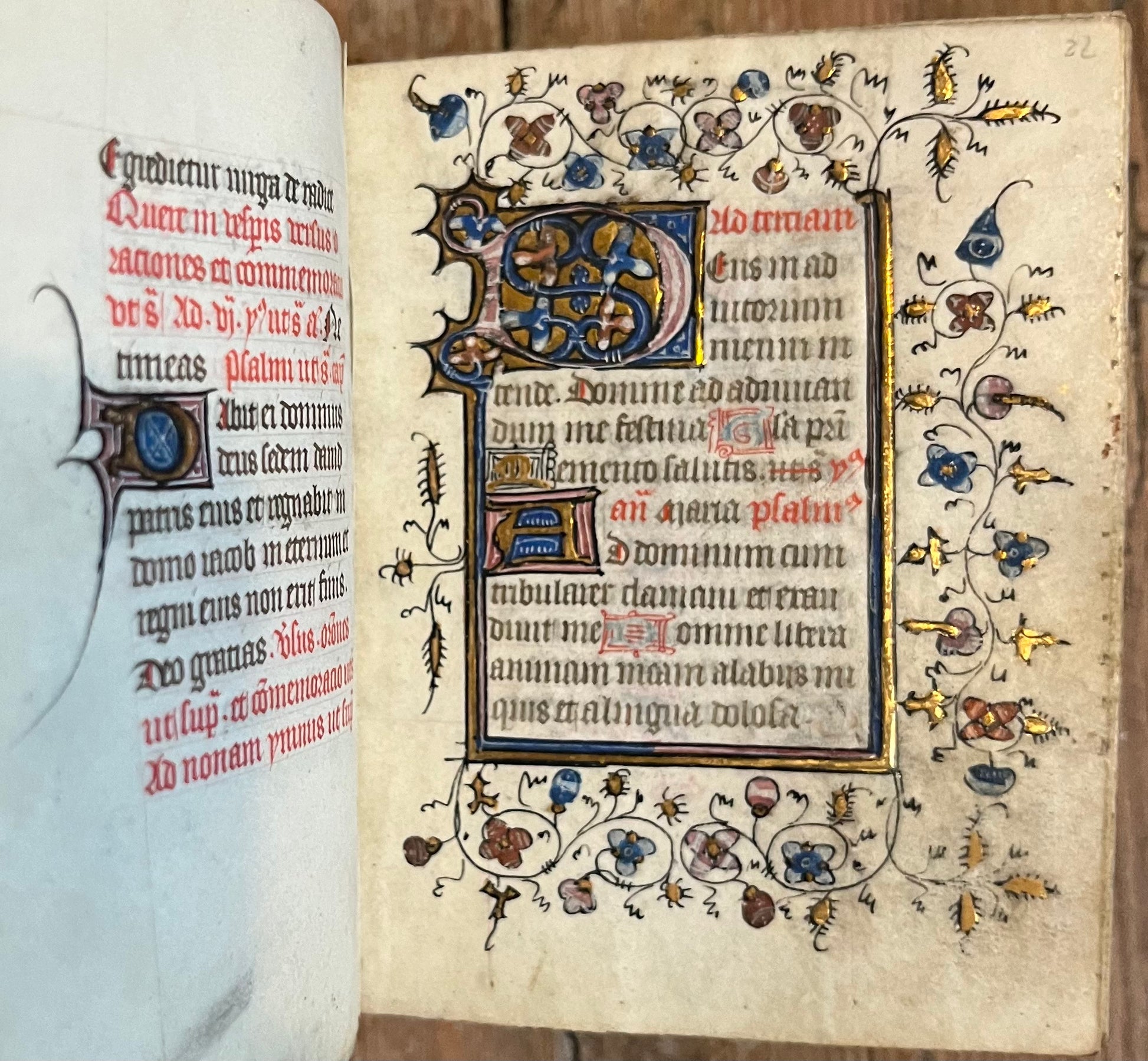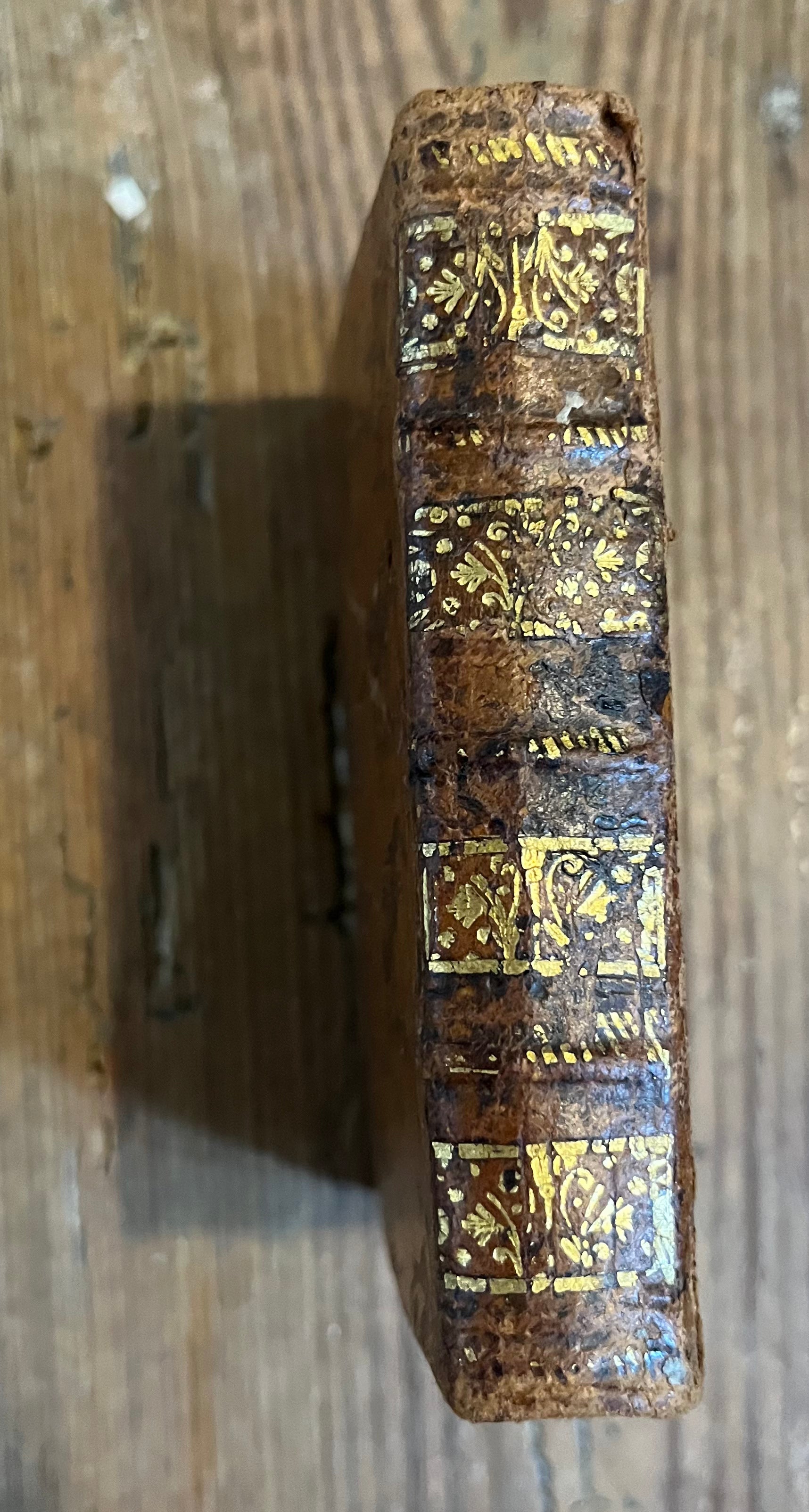De Bry Rare Books
A charming French 15th Century Book of hours likely intended for the private devotion of an English woman - with 5 large illuminated Initials.
A charming French 15th Century Book of hours likely intended for the private devotion of an English woman - with 5 large illuminated Initials.
Couldn't load pickup availability
A delightful mid-15th Century French Book of hours likely produced for the devotion of an English women - with 5 large illuminated pages.
Format
-Manuscript on Vellum
-5 Large illuminated initials with floral ivy borders highlighted in Gold.
-Multiple Initials in text in blue, red and Gold with intricate penwork
-Fine Gothica Textualis hand
-13 Lines per page with good margins
-75 Leaf fragment
-Probably commissioned for the English market in Rouen, France, given the style of decoration and the Calendar.
Binding and size
-18th Century full calf binding.
-Small format 9.5 x 7.5cm (written area 5 x 3.5cm approx)
Decoration
This beautiful Book of Hours features illumination consistent with production in Rouen in the mid-15th century. This decoration includes "rinceaux" borders with ivy leaves and flowers, alongside the distinctive “Rouen dots” of red, blue, and gold. The large 4 lineinitials are in blue and red, richly highlighted with delicate white penwork and liquid gold. Multiple 1 and 2 line initials are also found throughout the text.
Text
-Leaf 1 - Blank
-Leaves 2-12 - Calendar (missing the month of April)
-Leaves 13-44 - Hours of the Virgin (use of Rome)
- 13 - Ad Matutinum - with illustrated first page
- 21 - Ad Laudes (1 page only - missing illuminated title page).
- [Ad Primam missing]
- 22 -Ad Tertiam - with illustrated first page
- 26 - Ad Sextam - with illustrated first page
- 30 -Ad Nonam (missing illuminated title page)
- 33 - Ad Vesperas - with illustrated first page
- 40 - Ad Completorum - with illustrated first page
-Leaves 45-50 - Penitential Psalms (fragmentary)
-Leaves 51-54 - Litanies - including page of women saints
-Leaves 56 - 75 - Hours of the Dead (fragmentary)
Calendar - striking for the presence of English saints (Bold):
January: St Wulfstan, St Fabian and St Sebastian, St Bathildis
February: St Brigid
March: St Cuthbert and St Edward
[April is lacking]
May: St Dunstan, St Augustine of Canterbury " (Augustini Primi Episcopi), St Adhelm
June: - St Boniface, St Medard, St Alban - (Albani Anglois Protomartyris Vigilia), "Translatio St Edmund"
July: - St Thomas, St Martin
August: St Oswald, St Laurence, St Louis (French), St Bartholomew in red
September: St Giles, St Lambert, St Michael in red, St Matthew in red
October: St Denis (French), St Remigus (Reims), St Romanus (Rouen)
November: St Katherine on 25th November added by a later hand
December: St Lucy, St Thomas Becket
Summary
A charming little pocket book of Hours on Vellum, typical of mid-15th Century France (?Rouen), likely intended for the private devotion of an English woman.
The calendar of this Book of Hours strongly supports production for the English market. Key feast days are marked in red, notably: Augustini primi episcopi (St Augustine of Canterbury) on 26 May, Translatio Sancti Edmundi on 9 June, Albani Anglois Prothomartyris Vigilia (St Alban, England’s protomartyr) on 21 June, and St Thomas Becket on 29 December. Other English saints included are St Wulfstan, St Dunstan, St Adhelm, St Cuthbert, St Edward, and St Oswald.
Regarding the Book's production it was likely commissioned for the English market in Rouen. The inclusion of French saints such as St Louis, St Remigius, and St Denis, and the absence of St Genevieve, supports production in France, but points away from a Parisian origin. Together, these suggest that the manuscript was produced in northern France—perhaps Rouen given the presence of St Romanus—for an English client. A common origin for Books of Hours destined for England in the 15th century. Of note the inclusion of French saints would still be expected in a book produced for the English market in France.
The format and inclusion of women saints in the Calendar - St Anna, St Margaret, St Catherine, St Barbara and St Agatha (as well as others) support its use as a portable devotional work for a women. Interesting the litany page with women's saints is slightly more worn than others, suggesting regular use. Adding a personal touch, an owner has added in St Katherine of Alexandria on 25th November in a later hand, an important virgin martyr.
The manuscript is decorated with five large illuminated initials with gold ivy-leaf borders, and numerous smaller initials in gold, blue, and red with delicate penwork. A nice demonstration of the refined craftsmanship of a northern French aetelier producing work commissioned for the English market.
